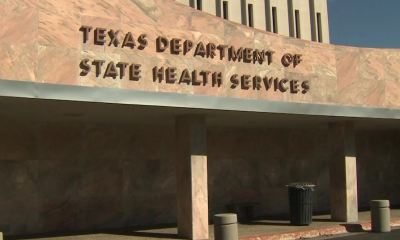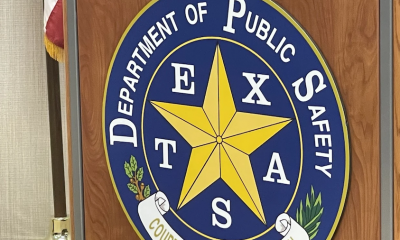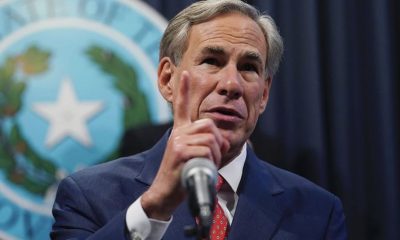Local News
A COVID-19 Lesson for Urban Design: Turn the Planning Process Upside Down
Published
5 years agoon
By Daniel Wood 
Editor
PLANO, TX – One of the many side effects of the COVID-19 pandemic has been a new appreciation for how we use – or don’t use – public space. A perfect case study was the Dallas parklet program that the city launched last May. It allowed businesses – and bars and restaurants, in particular – to create pop-up outdoor seating areas in underutilized street parking spaces so they could stay open at a time when congregating indoors was too dangerous.
That program allowed 19 establishments to transform street right-of-way into playful patios and was so successful that the city council voted to extend it last December. Now, with the second expiration deadline looming at the end of April, city staff told the council’s transportation and infrastructure committee on Monday that they want to extend the temporary program again while working to set up a more permanent program they are calling Street Seats.
The council members on the committee appeared generally agreeable, and so there is little reason to think that the program won’t move forward. That’s a win for an idea that was birthed, in part, by the folks over at Better Block, who have been staging these kinds of pop-up urban experiments for more than a decade. Dallas’ parklets also served as models for other cities that implemented similar programs. Better Block is now partnering with the city to create open source parklet designs that they hope will cut down on upfront design costs for businesses interested in the idea.
If there is a drawback to the project, it is that, since Street Seats applications opened in February, only one business has shown interest. But that shouldn’t be cause for alarm. For one, we can assume that many of the 19 temporary parklet providers will fold over into the Street Seats program; and as the program is established, there will hopefully be more interest in the years ahead as word gets out and the economy gets back to normal. But the number of people taking advantage of the parklet program in Dallas isn’t really the measure of its success. In fact, what I like best about parklets isn’t even parklets –it’s the process by which the program got off the ground and is moving toward becoming permanent.
What the COVID-19 experience offered was an excuse for the city to toss many of the normal rules of urban planning and street maintenance out the window. Everyone knew that the impact of the pandemic was going to be temporary, and so the city demonstrated a temporary willingness to go about things in a new way. Parklets weren’t the only idea for appropriating urban space dedicated to cars and turning it over to people. You may remember that early in the lockdown, people wanted to shut down a handful of streets in neighborhoods around the city to create new pedestrian zones. That idea was tossed following fears it would lead to congregating. But again, like parklets, the win was that the city was willing to go for it until neighbors pushed back.
This isn’t how urban planning is typically done at city hall. The typical model is offered by ongoing efforts to draft a sidewalk plan or to change the city’s parking code. As Alex reported, the city’s sidewalk master plan has done the yeoman’s work of counting the thousands of miles of sidewalks that are needed throughout the city, and yet it doesn’t have any plans or options for funding that construction. Similarly, the parking code revision, which I wrote about last month, shows some promise of moving toward completion. But as the arduous revision process continues, we are hearing many of the tired arguments against reducing parking requirements that may ultimately compromise its vision and impact.
But parklets – and the street closures – are ideas that just happened. Because of COVID-19, they were seen as temporary experiments, but as the city implemented them, it realized they both worked and did not pose any long-term drawbacks. This is the Better Block model in a nutshell: make a space better as a kind of performative gesture, and once people see how much better their neighborhoods could be, it is difficult to reverse.
The question as we head out of COVID-19 is how to find more opportunities to stage these kinds of temporary urban reclamation projects that could bypass the arduous, often self-defeating formal design process. We shouldn’t need a pandemic as an excuse to take a more experimental, whimsical, and risky approach to reclaiming public space.
Here’s one example: I’ve been running around my Oak Cliff neighborhood a lot during the pandemic, and each time I go out running, I cross a section of Jefferson Blvd that has a very large grassy median buttressed by three lanes of traffic on either side. The street is designed so cars can easily travel upwards of 50 mph even though it runs through a residential neighborhood. It’s dangerous as hell. And yet, the boulevard itself contains acreage of greenspace that is smack in the center of neighborhoods that the Trust for Public Land’s Park Score Index has identified as being starved for public park space.
What would it take to temporarily shut down two lanes of Jefferson to slow traffic and turn the median into a pop-up park? My bet is the cars would still get through just fine, but the median would be swarming with kids and dogs. It wouldn’t be easy to take that away any time soon. There are similar opportunities on streets like Jefferson around the city: wide boulevards designed to carry cars too quickly that could instead be turned into parks inspired by New York’s Sara D. Roosevelt Park on the Lower East Side. But we don’t need to spend a decade or find millions of bond dollars to make them happen. First create new pop-up parks and support for new parks will follow.
There are plenty of other opportunities for spontaneous experiments in urban redesign. Temporarily turn car lanes into bike lanes; transform underutilized intersections into public squares; allow restaurants to double as pop-up markets. What about rolling out that street closure idea again now that we know that outdoor transmission risk for COIVD-19 is very low and vaccinations are open to all? Has the slow return to normal made it so that we suddenly need all those over-designed, car-centric streets again? Close a few down – if only for a few months. If it works, keep them. If not, scrape them.
The trick is to allow ideas to percolate up from need or out of neighborhood-level inspiration. Find ways to pilot these things temporarily, see if they work, and only then try to amend the city codes to allow for their continuation. That is largely the inverse of the top-down way things get done now, and it is the long-term lesson that parklets – and the pandemic experience – can offer the city. COVID-19 turned the world upside down, but it also showed that turning the urban design process upside down can help set things right.
Read Also


Investigators are seeking the identity of the suspect involved in the homicide on Elm Street
Dallas, TX – According to the Dallas Police Department, the shooting occurred around 3:09 a.m. early Sunday morning. It happened in...


The Department of State Health Services is seeking grant applications for the DSHS Federally Qualified Health Center Incubator Program
Plano, TX – According to the state officials, the program grants will help eligible non-profit and public health care providers...


DPS reminds drivers to use extra caution in and around school zones and neighborhoods
Plano, TEXAS – State officials said that this includes knowing the Texas laws about driving near stopped school buses and...


Governor Greg Abbott sent a letter to President Joe Biden in response to a potential “discretionary redesignation” of the Permian Basin by the Environmental Protection Agency
Plano, TX – According to the state officials, the letter reiterates how the EPA is employing flawed logic and data...

